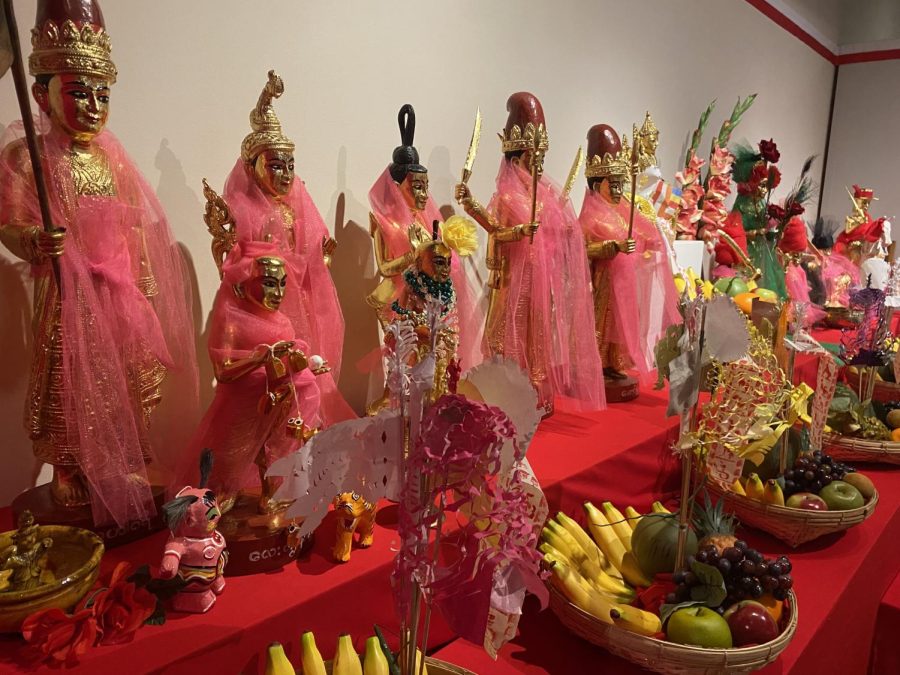To be or “Nat” to be – a look into Burmese spirituality
March 1, 2023
As a part of a lecture series hosted by the Center for Southeast Asian Studies, Catherine Raymond, a professor in art history and the director of the Center for Burma Studies at NIU, gave the lecture “Healing while Performing the Ritual to the Burmese Spirits” Friday afternoon in Cole Hall.
The protector spirits Raymond talked about are called nats.
In Burma, nats – pronounced similar to “nah” – are believed to inhibit the natural world. They are spiritual beings whose duty is to protect villages or individuals from their shrines on Mount Popa. They are everywhere, but like many similar beliefs, there are certain spirits that precede over the others.
“Spirituality is something you face when you go (to Burma); it’s omnipresent everywhere,” said Raymond.
She recalls a moment when working on her Ph.D. in Burma when she heard the loud banging of drums from ceremonial music being played at 6 a.m.. Since then, she has been interested in the celebration of the nat.
NIU possesses a vibrant altar containing 17 of the most popular nats, located in the Pick Museum of Anthropology in Cole Hall. It is an eye-catching display, full of offerings for the spirits like coconuts, bananas, money and a shooter of Jack Daniel’s.
Some of the nat were mischievous in life. 16 of the statues are covered in gold leaf, each wearing different colored clothes as garments and hats. The most important of the statues on the top left of the altar wear a bright pink cloth and the rest wear red and black cloth hats.
Among the many nat spirits, there is a pantheon of especially important beings, who are called the 37 Lord Nats.
Each of the 37 Lord Nats have their own important life stories, and all of them end violently. Take Nankarine, or “the Lady from Pegu” for example, a water buffalo who took care of an orphaned baby. When the child grew up, he became king and killed Nankarine.
Festivals, called Nat Pwe, are held in honor of the nat. They tend to last anywhere from three days to two weeks at a time, and are incredibly important to believers of nat. It is when people are able to ask the nat for protection or good fortune.
An important part of these ceremonies are mediums, or nat kadaw. Nat kadaw perform dances that reflect the personality of the nat when they were alive, each nat having their own unique dance and song.
“I think it’s so complex,” Raymond said. “The music is interesting because you see the medium reacting to (it). You at first don’t understand what they are doing.”
Nat kadaw don expensive costumes that are donated to them by the community so that they can perform dances that connect them to the spirits.
This practice is heavily connected to the values of Buddhism, focusing heavily on a life after death through reincarnation.
“In Buddhism you have the influence of your previous life acting about…you can be sick but maybe it’s not due to any physical or bacterial disease but…from the past, so it’s really intriguing. (Westerners) don’t have the same way of understanding the world,” Raymond said.
Besides being a fun experience, the lecture serves as one of the many reasons to study other cultures and their practices.
Lectures about Southeast Asian culture are hosted at noon on Fridays, in the Peters Campus Life Building, Room 100. Next week, the lecture will focus on spirituality in Malang, East Java.







